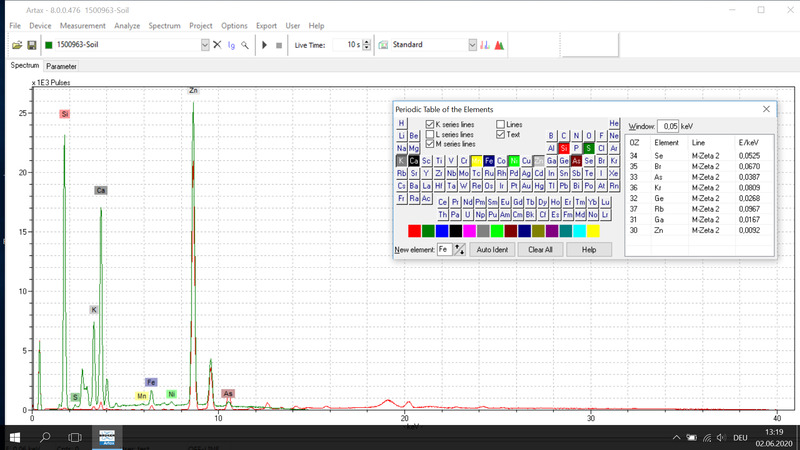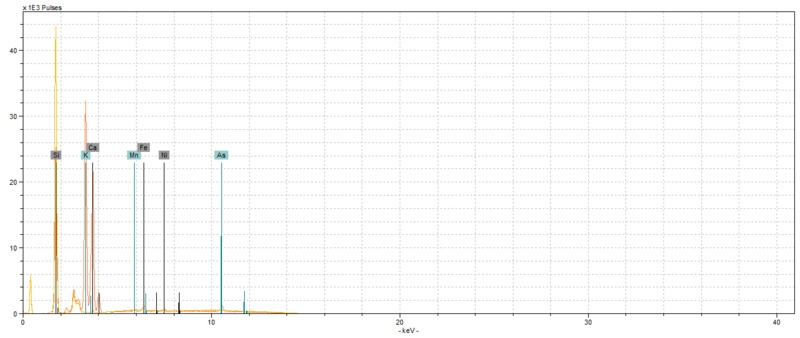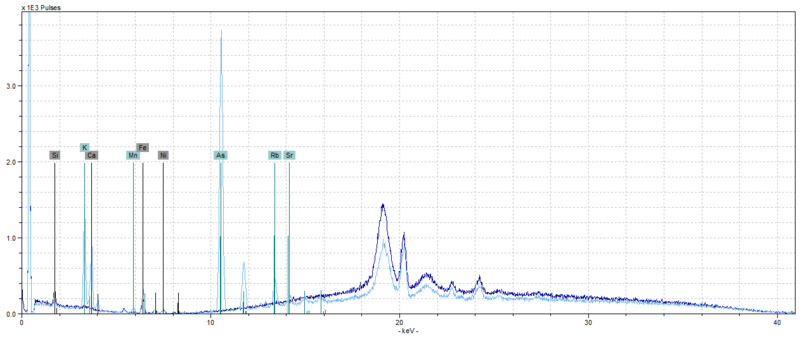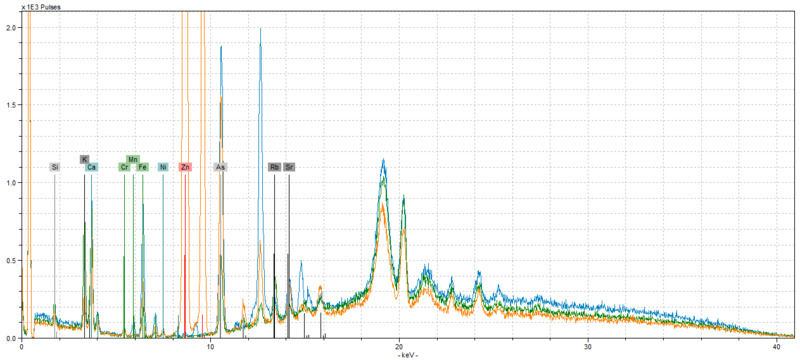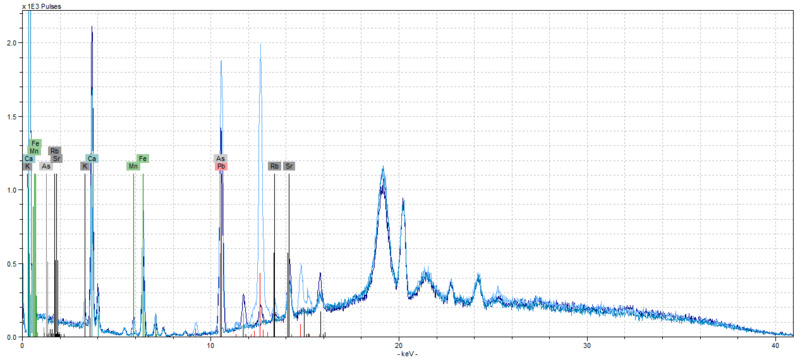Comparative Interpretation
Beside the analysis of the single instruments, an objective of the study was to find out more about the glass components through comparative research questions:
- How does the early 19th century glass harmonica differ from the modern instrument produced by Gerhard Finkenbeiner in 1983?
- Are there similarities or differences between the Deutsches Museum glass harmonica, the glass flute and the set of musical glasses with instruments from other collections?
- Can the results on the glass composition obtained from objects with known manufacturing contexts be used to trace instruments with unknown origins to specific workshops or geographic areas?
By overlapping the spectra taken from measurement spots and from different instruments, those questions could be addressed. The comparison with instruments from other collections was based on literature research (Haufe 1995) and unpublished research reports from the Museum of Fine Arts in Boston (Newmann 1992; Newmann 1997).
Different times, different glasses in the harmonicas
When comparing the two glass harmonicas, significant differences in the composition can be observed: While the 19th century glassmakers used a traditional glass recipe with a fair amount of trace elements, the modern instrument from 1983 is characterized by a very pure silica glass.
The purity of the Finkenbeiner quartz glass becomes even more evident, when comparing it with the XRF measurements from the historic glass harmonica from around 1800 (Inv. No. 7996). In the spectra, the corresponding peaks are marked grey, while the additional components in the old instrument are green.
Can we assume it’s a German glass trumpet?
Apart from the high zinc content, the glass from the trumpet is comparable to the musical glasses (Inv. No. 2003-27T1) and the green plate from the glasschord (Inv. No. 45933). The spectra of the three instruments overlap to a large degree, especially the peaks corresponding to iron and arsenic /lead compounds. Since both instruments – the glasschord and the set of musical glasses – are of German origin, it may be possible that the trumpet was produced in the same geographical region.
The Glasschord: one instrument, many glass types
The spectrum of the pinkish plate (P1) showed less resemblance with the other plates from this instrument, than with the results from the glass harmonica, the flute and the set of musical glasses. They all have distinct potash and manganese peaks. While the origin of the flute is unclear, the other three instruments were produced by German glassmakers. In order to assign those glasses to a specific manufacturing context, it could be of interest to take samples for more in-depth analysis and comparison with known samples.
Unlike the sample P1, the colorless and greenish glass plates are characterized by high calcium peaks compared to the potash peak. Furthermore, the spectra illustrate the difficulties in distinguishing between lines for arsenic and lead.
Citation: Charlotte Holzer, ‘Findings from Non-destructive Material Analysis on Musical Glass Instruments’, in: Materiality of Musical Instruments. A Virtual Exhibition.

